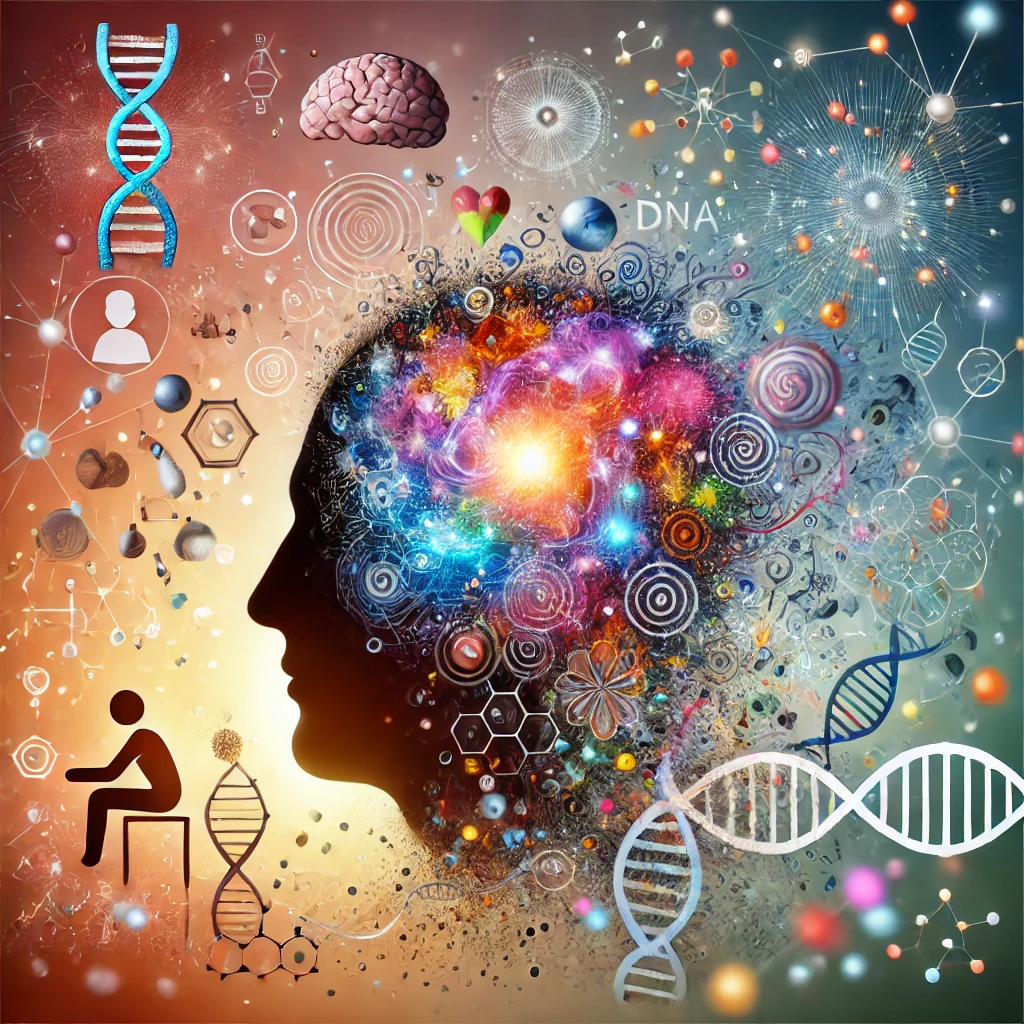Personality encompasses the traits, behaviors, emotions, and thought patterns that define individuals. It influences how we act, face challenges, and connect with others. So, what makes each person unique? The answer lies in the mix of biology, environment, and life experiences. Let’s delve into the science of personality to uncover the factors contributing to individuality.
1. The Foundations of Personality
Personality is shaped by a blend of genetic, neurological, and environmental factors. These elements interact in complex ways to create the distinct characteristics of each person.
A. Genetics: The Blueprint of Personality
Genetics significantly impact personality. Studies on twins, especially identical twins raised separately, show that traits like extraversion and neuroticism have strong genetic links.
The Role of Genes: Specific genes affect traits like temperament, risk-taking, and emotional sensitivity. For instance, variations in the DRD4 gene relate to novelty-seeking behavior.
Heritability: While genetics lay the groundwork, they don’t dictate everything. Estimates suggest that genetics influence about 40-60% of personality.
B. Neurology: The Brain’s Influence
The brain’s structure and function also shape personality traits. Key aspects include:
Neurotransmitters: Chemicals like dopamine and serotonin affect mood and behavior. High dopamine levels are often linked to enthusiasm and sociability.
Brain Regions: The prefrontal cortex governs decision-making and self-control, while the amygdala handles emotional responses.
C. Environmental Influences
The environment plays a crucial role in shaping personality by interacting with genetic predispositions.
Family Dynamics: Parenting styles, sibling relationships, and household culture significantly impact personality development.
Cultural Context: Cultural norms and values influence traits like collectivism, individualism, and assertiveness.
Life Experiences: Events such as education, relationships, and personal challenges leave lasting imprints on personality.
2. Personality Theories: Understanding Individuality
Psychologists have created various theories to explain personality, each offering unique insights into what makes us different.
A. The Big Five Personality Traits
The Five-Factor Model (FFM) is widely accepted for understanding personality. It identifies five broad traits:
- Openness to Experience: Creativity, curiosity, and a preference for novelty.
- Conscientiousness: Organization, dependability, and goal-directed behavior.
- Extraversion: Sociability, energy, and a tendency to seek stimulation.
- Agreeableness: Compassion, cooperation, and a focus on social harmony.
- Neuroticism: Emotional instability and sensitivity to stress.
These traits exist on a spectrum, making each individual’s combination unique.
B. Carl Jung’s Typology
Jung’s theory laid the foundation for the Myers-Briggs Type Indicator (MBTI), categorizing personalities into 16 types based on preferences like introversion vs. extraversion and thinking vs. feeling.
C. Psychoanalytic Theories
Sigmund Freud and later psychoanalysts emphasized the role of unconscious desires, childhood experiences, and internal conflicts in shaping personality.
D. Humanistic Perspectives
Carl Rogers and Abraham Maslow viewed personality as a journey toward self-actualization. They emphasized individual potential, free will, and the importance of a supportive environment.
3. Personality Development: Nature Meets Nurture
Personality evolves throughout life due to the ongoing interaction between genetic predispositions and environmental factors.
In conclusion, the science of personality reveals that our unique characteristics result from a complex interplay between our biology, brain function, and the environments we navigate. Understanding these influences helps us appreciate the diversity of human behavior and the intricate nature of individuality.
Early Childhood: The Critical Window
Temperament
From birth, babies show different temperaments. Some are calm, others more reactive. These early traits are the foundation of personality.
Attachment Styles
The way infants form attachments with caregivers, whether secure or insecure, affects their emotional control and social interactions.
Adolescence: The Period of Self-Discovery
During adolescence, hormonal changes, peer pressure, and the search for identity refine personality.
Adulthood: Stability and Growth
While personality becomes more stable in adulthood, significant life events like career shifts, marriage, or trauma can still influence traits. For instance:
- Conscientiousness often increases as responsibilities grow.
- Extraversion and openness may decrease with age, whereas agreeableness usually rises.
Uniqueness Beyond Traits
Personality traits are crucial, but individuality also comes from other elements:
Values and Beliefs
What we value and believe shapes our moral compass and choices, influenced by culture, upbringing, and life experiences.
Interests and Passions
Our hobbies and passions define how we spend our time and connect with others.
Emotional Patterns
The way we handle and express emotions, like empathy or anger, adds to our uniqueness.
Cognitive Styles
Different thinking patterns, whether analytical, creative, or intuitive, contribute to personal uniqueness.
The Role of Technology in Personality
Modern technology, especially social media and digital interactions, affects how personality is expressed and developed.
- Self-Expression: Platforms like Instagram or TikTok let people show their interests and traits.
- Feedback Loops: Online interactions shape self-view, reinforcing certain traits over time.
- Personalization: Algorithms adjust to preferences, highlighting individuality further.
Measuring Personality
Personality assessments help understand individual differences. Common methods include:
Self-Report Questionnaires
Tools like the Big Five Inventory (BFI) or MBTI depend on individuals rating their traits.
Projective Tests
Tests like the Rorschach Inkblot Test or Thematic Apperception Test (TAT) analyze responses to ambiguous images.
Behavioral Observations
Psychologists observe how people act in various situations.
While these tools offer insights, they aren’t absolute and should be used carefully.
The Practical Impact of Personality
Knowing personality has practical uses in different areas:
Relationships
Understanding personality traits can enhance communication, empathy, and conflict resolution.
Career Choices
Certain traits fit better with specific jobs. For instance:
- Conscientious people do well in structured roles.
- Creative personalities excel in artistic or innovative fields.
Mental Health
Recognizing personality patterns helps diagnose and treat mental health issues, like anxiety or personality disorders.
The Mystery of Individuality
Despite scientific advances in understanding personality, the uniqueness of each person remains partly unexplained. Elements like spiritual beliefs, chance, and personal decisions add to the mystery of individuality.
Conclusion
The science of personality shows a complex mix of biology, psychology, and environment that makes each person unique. By understanding these factors, we can celebrate our differences and appreciate the rich variety of human experience. It’s the unique blend of traits, values, and quirks that make each of us truly extraordinary.




